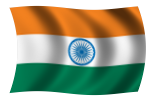Forex trading started when
Forex trading has a long and fascinating history, dating back to centuries ago. Understanding when and how forex trading started is crucial for traders looking to delve deeper into the world of foreign exchange. To shed light on this topic, here are three articles that delve into the origins of forex trading and provide valuable insights into its evolution.
The Origins of Forex Trading: A Historical Perspective

Forex trading, also known as foreign exchange trading, has a rich history that dates back thousands of years. The concept of trading currencies can be traced back to ancient civilizations such as the Babylonians and Egyptians, who exchanged goods and services using different forms of currency. The modern forex market, however, has its origins in the Bretton Woods Agreement of 1944, which established a fixed exchange rate system between major world currencies.
In India, forex trading has gained popularity in recent years, with more and more investors looking to diversify their portfolios and take advantage of the opportunities offered by the global currency markets. The rise of online trading platforms has made it easier than ever for individuals to participate in forex trading, allowing them to trade currencies from the comfort of their own homes.
One key factor that has contributed to the growth of forex trading in India is the country's rapidly expanding economy. India is one of the fastest-growing major economies in the world, and its currency, the Indian rupee, is becoming increasingly important on the global stage. This has created new opportunities for Indian traders to profit from fluctuations in the value of the rupee against other major currencies.
Exploring the Ancient Roots of Forex Trading
Today we have with us an expert in the field of forex trading to shed some light on the ancient roots of this lucrative market.
Q: Can you tell us about the origins of forex trading and its relevance in today's market?
A: Forex trading actually dates back to ancient times when merchants exchanged currency to facilitate trade between different regions. The concept of exchanging one currency for another has been around for centuries and has evolved into the global market we see today. In India specifically, forex trading has a rich history due to its strategic location along trade routes.
Q: How have the ancient roots of forex trading influenced the modern market?
A: The ancient roots of forex trading have laid the foundation for the modern market we see today. The principles of exchanging currency based on supply and demand have remained constant over time. Traders in India and around the world still use these fundamental concepts to navigate the complexities of the forex market.
In conclusion, understanding the ancient roots of forex trading is crucial for traders in India to grasp the historical significance of this market. By learning from the past, traders can gain valuable insights into the principles that drive the forex market today.
Uncovering the Beginnings of Currency Exchange: A Journey Through History
Today, we are joined by a renowned historian who has delved deep into the origins of currency exchange. Could you please share with us some insights into the history of currency exchange in India?
Historian: Certainly! Currency exchange has a rich history in India, dating back to ancient times. The concept of exchanging goods for other goods or precious metals can be traced back to the barter system that was prevalent in early Indian civilizations. As trade flourished and the need for a more efficient system arose, coins were introduced as a form of currency.
Over time, various empires and dynasties minted their own coins, each with their unique designs and inscriptions. The concept of currency exchange became more formalized as trade routes expanded, leading to the establishment of money changers and trading posts in major cities like Taxila and Pataliputra.
The advent of foreign invasions and colonial rule further shaped the currency exchange landscape in India, with the introduction of foreign currencies and new trading practices. Today, India boasts a thriving currency exchange market, with a wide range of services catering to locals and tourists alike.
In conclusion, understanding the beginnings of currency exchange in India is crucial for appreciating the evolution of trade and commerce in the region. It sheds light on the cultural,

